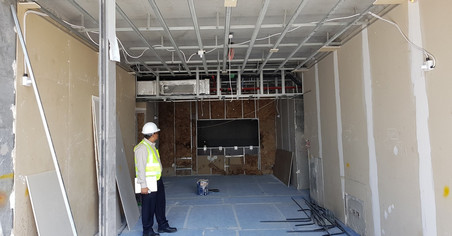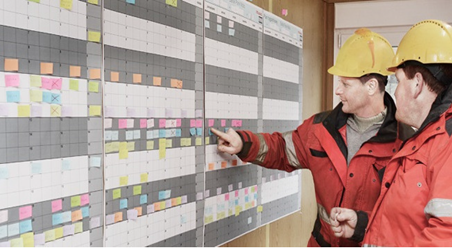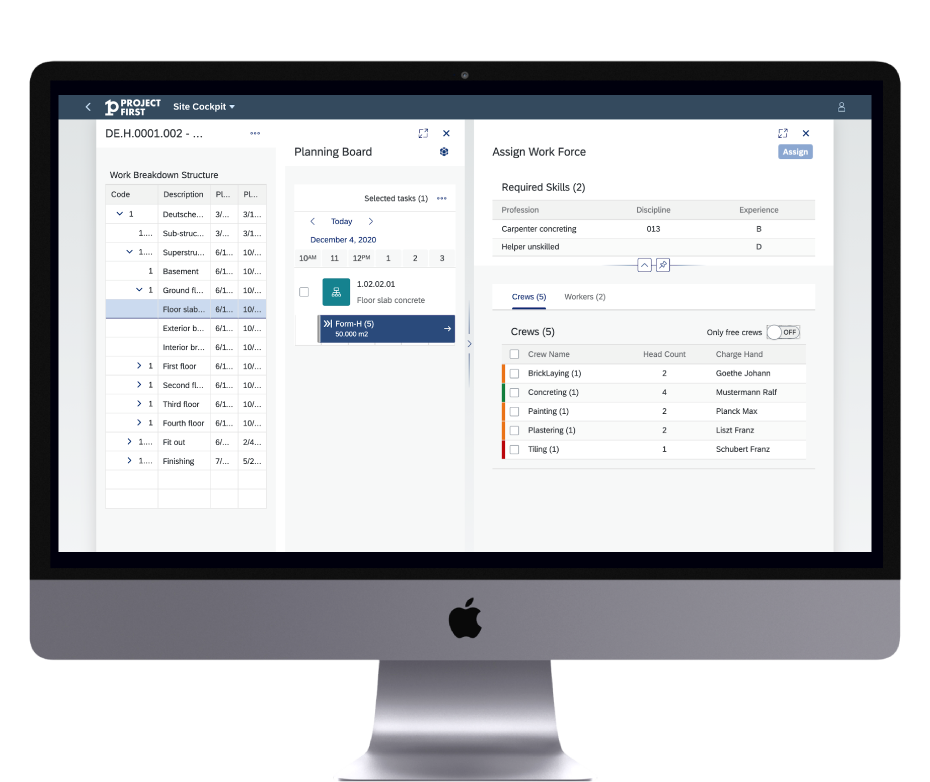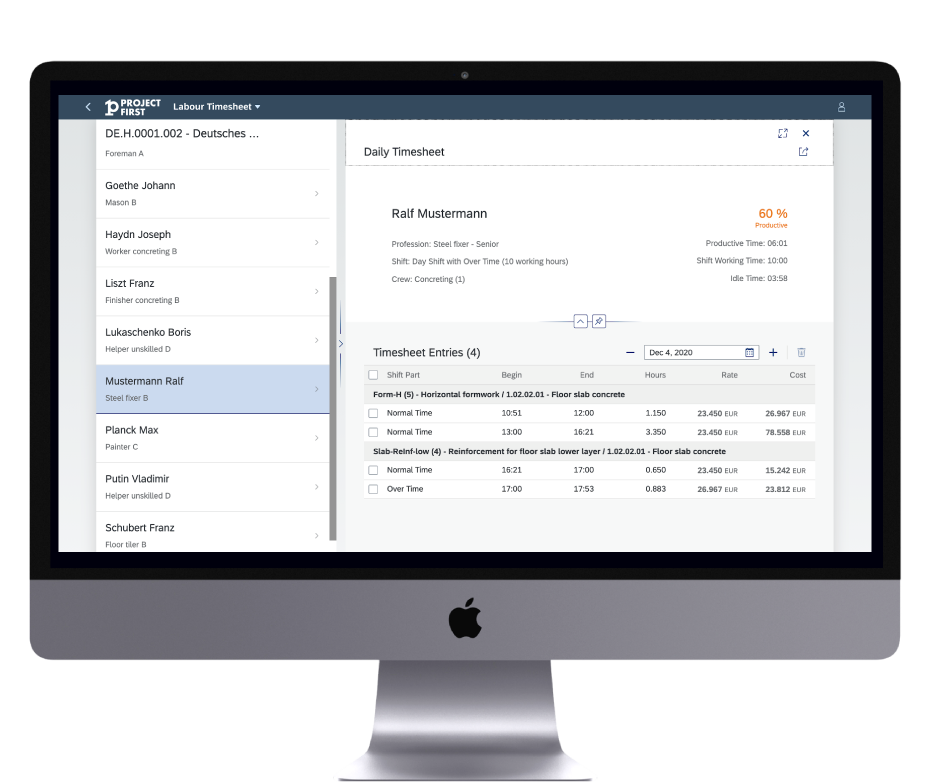Site Cockpit
For me this was a breakthrough. If our customers would use a Last Planner© System then we could provide both planned and actual location of workers.
Of course there needed to be a digital version of the planning board. And workers needed to be assigned to tasks so that I could generate the timesheets I originally wanted to automate.
I found some early Last Planner© apps. But they just digitized the Post-it notes. With some of them you could add the headcount to the description of the task. But there was no way assigning individual workers.
So I started Project First and we developed Site Cockpit. With Site Cockpit you create tasks from Lean Recipes. Lean Recipes know the skills that are required and Site Cockpit searches for workers and crews that are suitable and available.
Tasks are also assigned to shifts. Shifts know their working hours, breaks and time types. Site Cockpit generates daily timesheets for each worker with a breakdown of tasks performed in each time type. Based on wage classes and uplifts for overtime the labor cost is calculated. And the comparison with the working hours of the shift gives you the productive KPI.
These and many more features you can explore at www.project-first.app.



